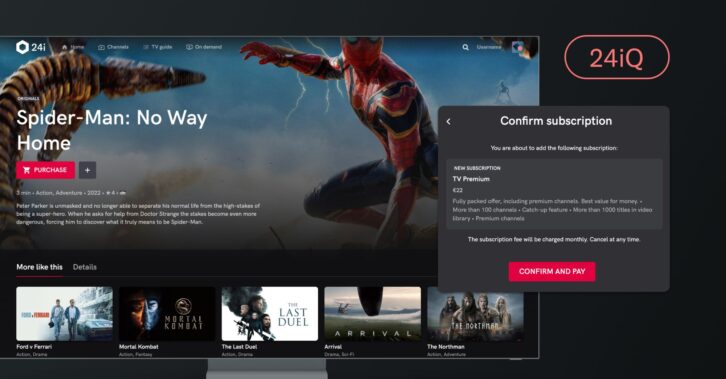The pace of change in streaming is dizzying. In just a few short years, we’ve seen many of streaming’s most accepted truths being overturned: Netflix and Disney+ have added ad-supported subscription tiers, and Amazon’s become one of the world’s biggest sports rights holders. Post-pandemic, most major movie studios have also slashed the length of their theatrical release windows, with blockbuster movies now going almost straight to streaming if you’re willing to pay a premium for access. Meanwhile, FAST channels have exploded in popularity around the world despite the long-held assumption that the convenience of VoD had killed linear viewing.
The one thing that’s constant here is change. That, a lot of acronyms: AVoD, FAST, SVoD, PPV, and even Electronic Sell Through (EST) or “Premiere Access” as it’s known on Disney+. Anyone for streaming Scrabble?
So, how do smaller streaming services (those without the mega-budgets of these household names) avoid getting stuck in a streaming rut while everyone else around them is changing? The secret is to build flexibility into every part of your streaming technology. Here are three important things you might not have considered that will be essential if you want to flex your streaming business models:
Asset-level availability
If your service was conceived at the height of the SVoD ascendancy, you may now find that your technology platform doesn’t have true flexibility. In many cases, availability rules (dates, regions, business models) can only be assigned to groups of assets rather than individual episodes in a series or different seasons of a long-running series. Other platforms may allow only one business model per video asset.

Look for full freedom to define access rules that reflect your business goals. Got a hot new flagship series? It might make sense to offer one or two episodes to all users as AVoD to get viewers hooked, then upsell them to an SVoD package to watch the rest. You may also wish to have individual assets that move from one business model to another during their lifetime. Perhaps your premium tier SVoD subscribers get exclusive pre-release access before content goes on general release to standard tier subscribers, and then joins the AVoD pool. Broadcasters may want ad-supported catch-up TV for a period after the content airs before it then goes into an SVoD package. You could even make next week’s episode available as TVOD for those who just can’t wait to see it.
Data management to maximise CPM for AVoD and FAST
When it comes to ad-funded content, we know that not all views are worth the same. Increasing the value of the slot for advertisers can lead to a higher CPM, a powerful way to increase revenue from viewers you’ve already got. The key here is to make ads both contextual (relevant to the content) and addressable (relevant to the viewer). It’s hard to achieve without a single system that holds or coordinates both the content metadata and the viewing preferences of individual (anonymized) viewers using profiles. Feeding combined information to your dynamic ad insertion (DAI) provider is the route to higher CPM.
Don’t leave personalisation too late
Whatever your business model, building engagement is essential to your success. Analysis of our customers with subscription-based streaming services suggests that getting subscribers to try more than three content brands (for example watching at least some episodes of Friends, Seinfeld, Cheers and The Office) within the first 14 days of their subscription is a watershed benchmark. Data suggests this magic number of more than three brands watched will result in a user being 55 per cent less likely to churn. In other words, variety matters. And personalisation is the way to encourage more varied viewing.
Data from companies that use our 24iQ personalisation platform suggests users who interact with content that’s recommended to them specifically based on their own viewing habits will go on to watch almost twice as much content (44.7 per cent) as those who don’t interact with recommendations. Imagine what “twice as much content viewed” would do to your AVoD or FAST revenue, or your SVoD churn rate. Don’t put personalisation on the “nice to have in the future” list, because without it you may not make it to that mythical future.
Take control of your UX, integrations and curation strategy
Of course, having flexibility around your business model also requires the ability to easily adjust your UX, analytics and rights management. And, as many streaming services will attest, the rapid growth in AVoD and FAST libraries brings pressure on content discovery, search and curation.







